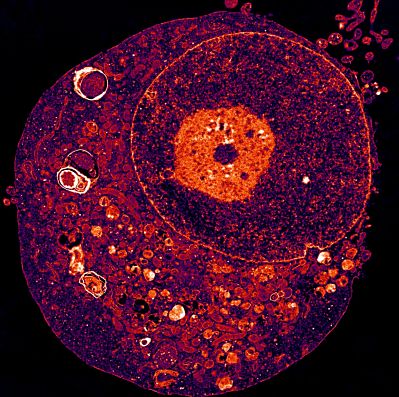As part of the work carried out on tumour resistance, the SIRIC ILIAD teams are proud to announce the publication of the article “Paracaspase MALT1 regulates glioma cell survival by controlling endo-lysosome homeostasis”.
Glioblastoma, an incurable brain tumour, is driven by a reservoir of stem cells capable of initiating, maintaining and renewing the tumour. The study conducted by CRCINA researchers, and published in the prestigious journal The EMBO Journal, reveals that a gene (MALT1) acts as a life/death checkpoint for cancer stem cells.
Glioblastoma multiforme (GBM) is one of the most devastating brain tumours in adults, with a median survival of 15 months after diagnosis. Currently, standard treatment includes neurosurgical resection followed by repeated cycles of chemotherapy and radiotherapy. Although these standardised strategies have been shown to be beneficial, they remain essentially palliative. Within these highly heterogeneous tumours, there is a subpopulation of tumour cells called glioblastoma stem-like cells (GSCs) that play a role in tumour initiation and progression, as well as in therapeutic resistance and recurrence.
Researchers from the CRCINA team “Signalling in angiogenesis, angiogenesis and permeability” led by Julie Gavard were interested in the expression of a gene (MALT1) present and active in human tumours. Their studies carried out on cells from glioblastoma patients showed that molecular blocking of the expression of this gene could be toxic for tumour cells.
Using a cell imaging approach, the researchers also found that blocking the activity of the gene – or reducing its expression – caused an uncontrolled and fatal increase in lysosomes, the intracellular structures that normally act as recycling stations, in GSCs.
Find press releases abroad :


